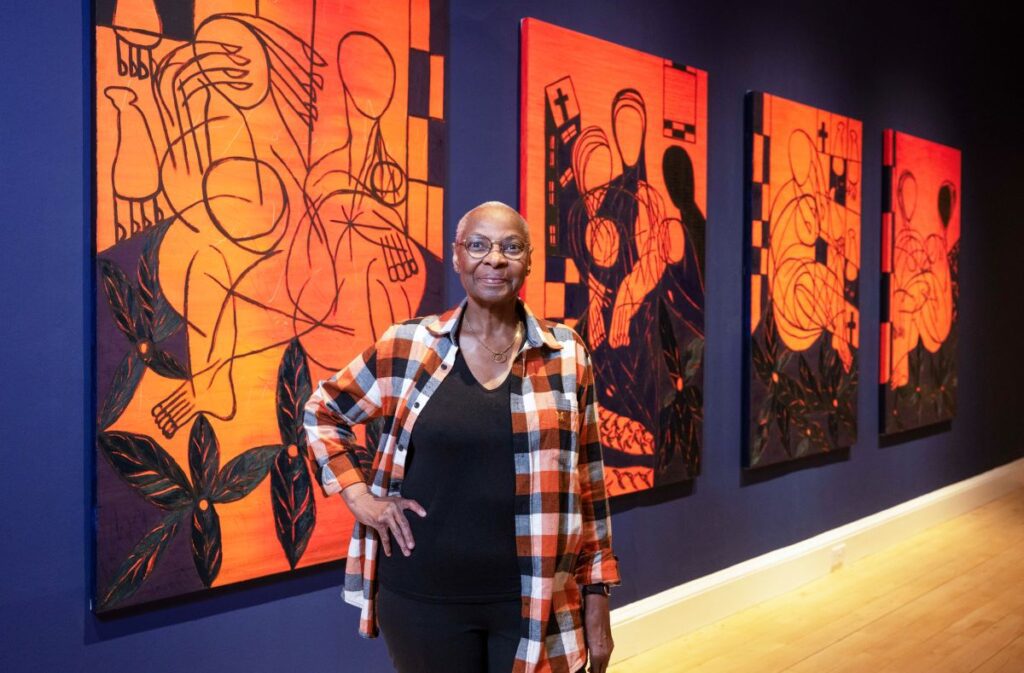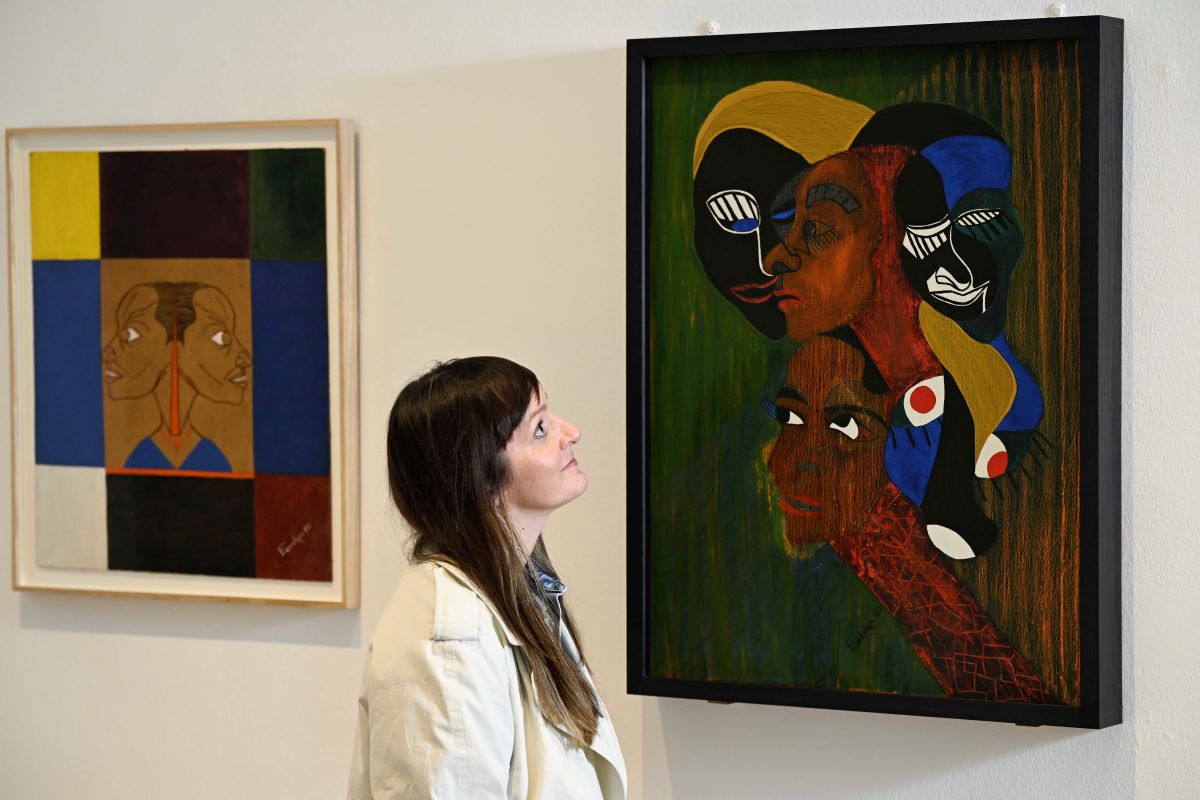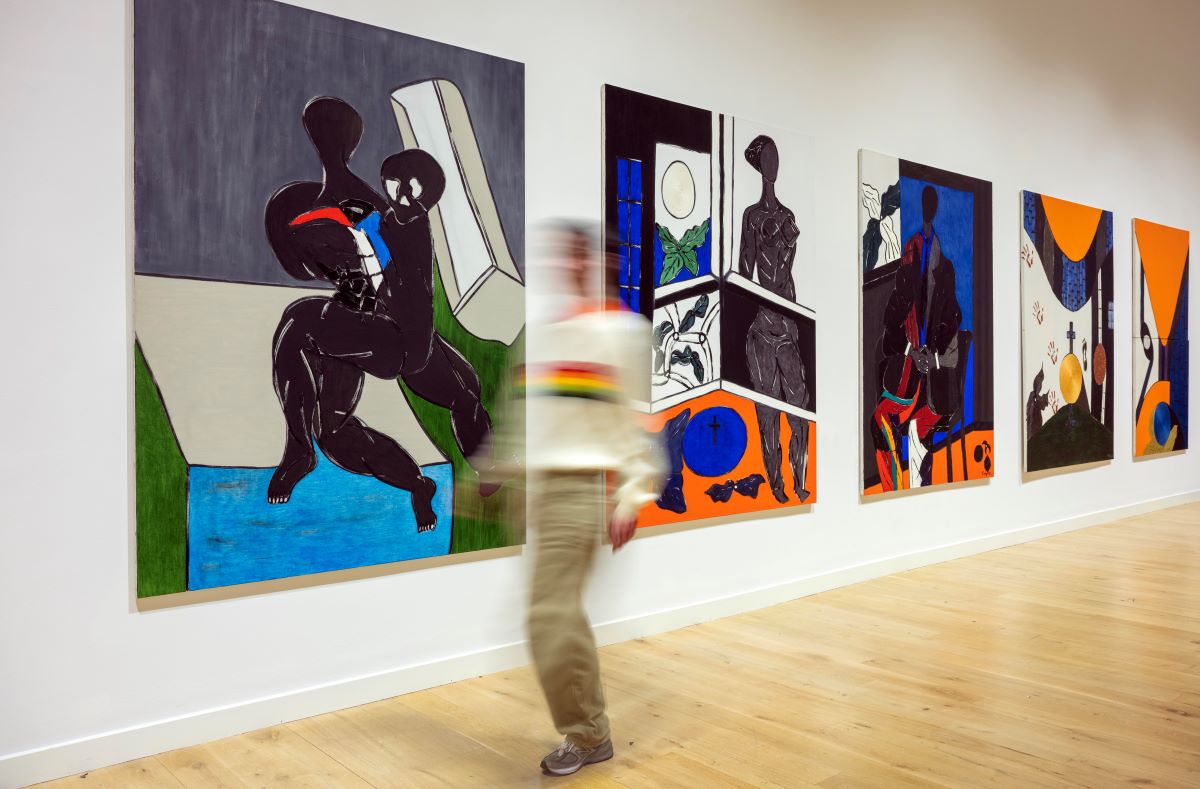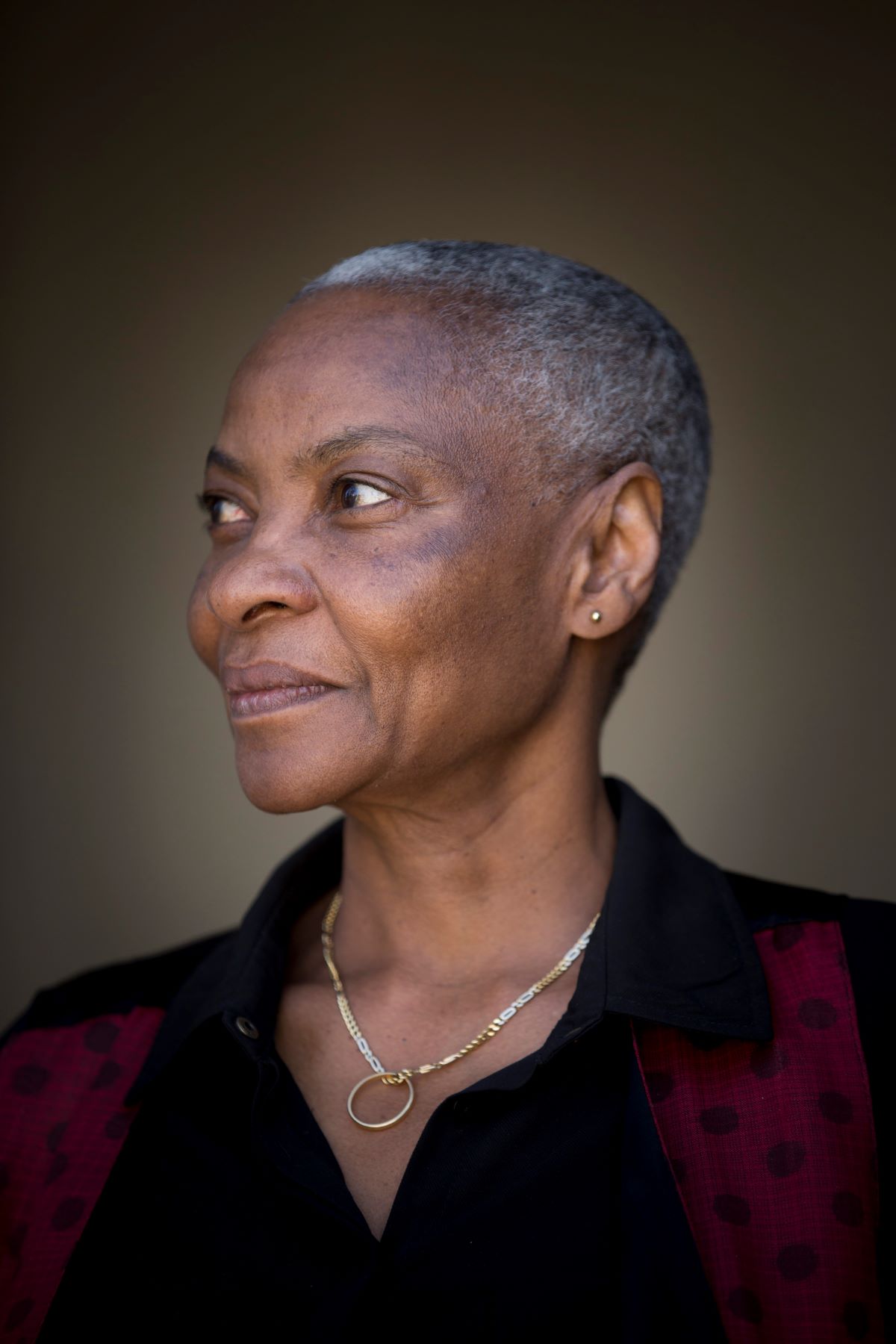
Everlyn Nicodemus: ‘This exhibition feels like the most important moment in my career’
Following a 25-year break from painting, Everlyn Nicodemus has unveiled a new series of artwork at the National Galleries of Scotland.
More than 80 drawings, collages, paintings and textiles from the last 40 years of her career are on display at Modern One in Edinburgh.
Everlyn champions a belief that creativity is a form of healing and her work responds to the oppression of women, the enduring impact of racism and her own personal trauma and recovery.
Her bold and courageous use of colour, form, light and shade, invites visitors to explore and question their understanding of identity, belonging and faith.
The National Galleries of Scotland has acquired two powerful works by Everlyn to mark the exhibition.
The Wedding 45 (1991) is from Everlyn’s largest body of work – an intricate and symbolic group of over 80 paintings produced in the 1990s.
The series was created during her recovery from a mental health breakdown, which the artist now understands to be linked to post-traumatic stress disorder, diagnosed some years later.

Credit: Neil Hanna
The Wedding 45 represents a resilient return to life, in all its beauty, difficulty and complexity.
The faceless female body has returned to a position of strength and empowerment, with an equal relationship to the world around her.
A second work, Eva (1981) has also been gifted to Scotland’s national collection by Everlyn Nicodemus and Richard Saltoun Gallery.
Painted when Everlyn was living in Stockholm, Eva depicts the Old Testament figure of Eve (Eva in Swedish), pregnant and standing on a large red apple, with a bite taken out of it.
Her pregnancy and the apple both indicate that this work depicts her after Adam & Eve’s expulsion from the Garden of Eden for consuming the forbidden fruit of the tree of knowledge.
The painting’s themes of pregnancy and birth, the Biblical focus on sin, and Eve’s victimisation are linked to the artist’s memories, from growing up in Tanzania, of the stigma that surrounded pregnancy outside of marriage.
As in many cultures, she recalls that young women were blamed for their unwanted early pregnancies, even when the result of rape.

Credit: Neil Hanna
Eva is a painting that proudly declares the artist’s unwavering support for global reproductive rights.
‘This exhibition feels like the most important moment in my career, spanning over 40 years of my work,’ Everlyn said.
‘It’s especially meaningful to me that it’s happening here in Edinburgh, a place that truly feels like my home.
‘Having lived as a nomad all my life, this is the first place where I’ve been able to live and create in one space that is both my home and my studio.
‘It’s a rare and unique experience for any artist, and especially for a Black African woman artist, to witness a retrospective of their own, and of this scale, so I feel incredibly lucky.
‘This exhibition is a journey through my whole artistic life, and I hope it resonates deeply with those who experience it.’
A history
Born in Marangu, Kilimanjaro, Tanzania in 1954, Everlyn has lived and worked across Europe since the mid-1970s, but has made Edinburgh her home for the last fifteen years.
Since the 1980s, Everlyn has made paintings, collages and works on paper that explore violence against women, personal trauma and the isolation and dehumanisation of living within structural racism.

Everlyn Nicodemus. Credit: Joyce Marshall
She will chart her career from those early days, with works including her very first painting, After the Birth (1980).
At over two metres in length, this oil on bark cloth painting shows a large-scale image of a mother and child, brought to life through swirling, wavy black and white lines against a rich terracotta background.
The mother figure is seen protectively placed over the child; however, her face is covered by her hands, her body hunched in a state of recovery.
This scene gives a sense of deep emotions such as uncertainty and isolation; the often-unspoken elements of motherhood.
Even in her earliest work, Everlyn’s skill as a visual storyteller is clear, compassionately highlighting women’s shared experiences and struggles.
From her earliest work, to the newest, the exciting debut of Everlyn’s new series Lazarus Jacaranda (2022–24) will form a key element of this exhibition, signifying an end to the artist’s 25-year hiatus from painting.
While not directly referencing the biblical character in the series’ title, the paintings consider themes of cyclical life and Everlyn’s belief that ‘art is resurrection’.
Female figures, both archetypes and named individuals, are shown in relaxed and restful poses, their feet supported by flowers and petals that spring powerfully to life.
The exhibition runs until May next year.
Read more News stories here.
Subscribe to read the latest issue of Scottish Field.
TAGS

